Everyone who has visited the Basque country longs to return; it is a blessed land. – Victor Hugo
The Camino del Norte or Northern Way stands out as one of the most scenic, culturally rich, and lesser-known Camino de Santiago routes. The trail winds through the Basque Country, capturing the hearts of travelers with its rugged coastline, unique language, vibrant culture, and delicious cuisine. In this post, we’ll dive into the beauty and experiences awaiting pilgrims on the Camino del Norte in the Basque Country, from its dramatic landscapes to its deep-rooted traditions.
From Hondarribia on the border with France, the Camino makes its way through the picture-perfect city of San Sebastian, leading pilgrims through quaint Basque fishing villages, past sandy beaches, and through lush forests. Each day brings a new view, and each turn can surprise you with breathtaking vistas of the Bay of Biscay. The Basque Country’s coastline, with its cliffs rising high above the waves, gives a feeling of both solitude and grandeur, while the inland hills offer a lush landscape that showcases the natural beauty of northern Spain.
A Brief History of the Camino del Norte
The Camino de Santiago dates back to the 9th century when the remains of Saint James, one of Jesus Christ’s apostles, were discovered in Galicia. Since then, millions of pilgrims have made the journey to his final resting place in Santiago de Compostela. The Camino Norte was most likely the earliest route taken by pilgrims from continental Europe who wanted to avoid the Muslim-controlled territories further south. As the Christian kingdoms in the north of Spain pushed the Muslim kingdoms further south, the Camino del Norte lost its appeal to the so-called Camino Francés or French Way.
Since the rebirth of the Camino in the late twentieth century, the Camino del Norte has gradually begun to regain its previous importance as a pilgrimage route to Santiago de Compostela. Nowadays, pilgrims seeking a unique experience without forfeiting the essence of the Camino have begun to rediscover this route.
The Camino del Norte Itinerary in the Basque Country
The Camino del Norte enters Spain through the Basque Country at the town of Irún after leaving the French town of Hendaye. The trail then passes follows the Basque coast all the way to the town of Deba where it turns inland to maintain a direct route westward. Possibly the highlight of this section is the city of San Sebastian and its famous Concha Beach. Once inland, the trail leads us to the town of Gernika, made famous by Picasso, and eventually to Bilbao. Following the Nervión River, the trail leaves the city and returns to the coast, where it eventually enters the region of Cantabria.
Our Camino del Norte: Basque in the Glory tour starts in the alternative entryway into Spain from France: in the town of Hondarribia. Indeed, pilgrims still use this port of entry by shuttling across the river from Hendaye. At Deba, we jump ahead to the town of Markina where we continue our journey to Gernika. Our farewell takes place in the port town of Portugalete near Bilbao.
Have a look at our day-by-day Camino del Norte itinerary:
Day 1: Bilbao
We meet our group in Bilbao, the one-time industrial powerhouse which is currently undergoing its own Renaissance. After your Orientation Meeting, a local art historian takes us on a guided visit of the internationally acclaimed Guggenheim Museum followed by a stroll of Bilbao’s Old Quarter.
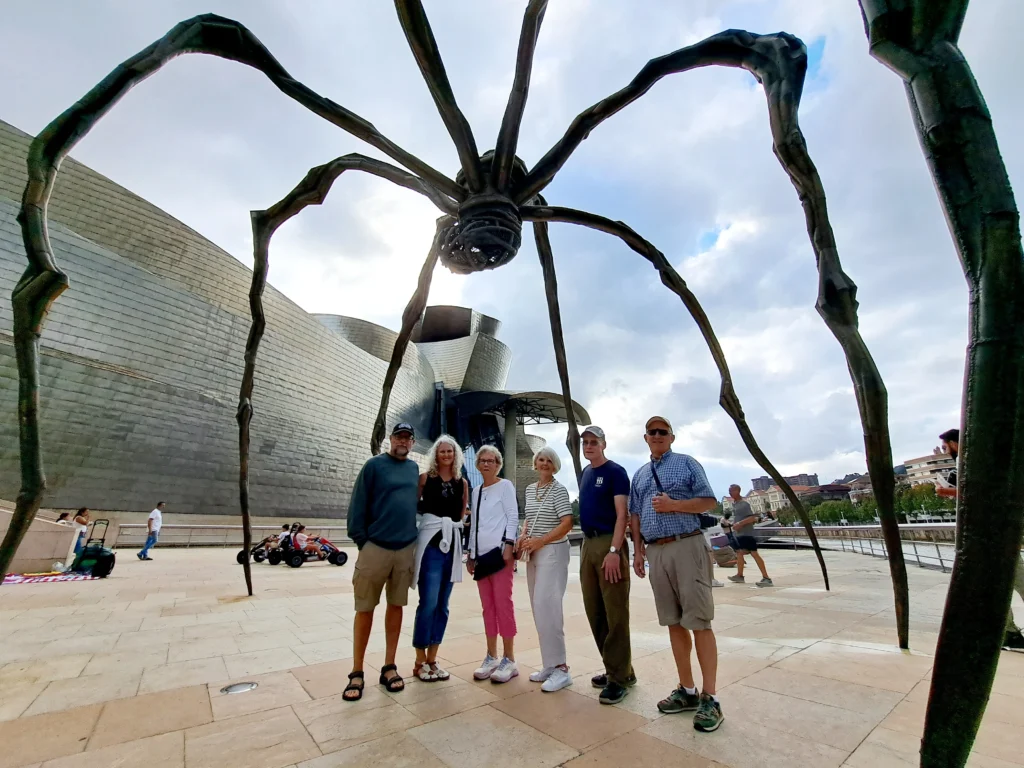
Day 2: Chillida leku & Hondarribia
We make our way to Hondarribia where our Camino starts. On route, we will have a chance to visit the fascinating museum of renown Basque artist Chillida. On arrival to Hondarribia, we take our first steps on the Camino del Norte de Santiago with a short climb to the Sanctuary of Guadalupe. Walking: 2 miles/3.5 kms.
Day 3: Sanctuary de Guadalupe to Pasajes San Juan
Starting from Guadalupe, we cross along the mountain of Jaizkibel until we work our way down to the port of Pasajes de San Juan. We then return to Hondarribia to our hotel. Walking: 7 miles/12 kms.
Day 4: Pasajes San Juan to San Sebastián
We return to Pasajes de San Juan and cross over to San Pedro on the other side of the port like the pilgrims did a thousand years ago – via boat! We then make our way to San Sebastián. Here the beauty of La Concha beach makes it a wonderful place for an afternoon stroll. Walking: 7 miles/12 kms.
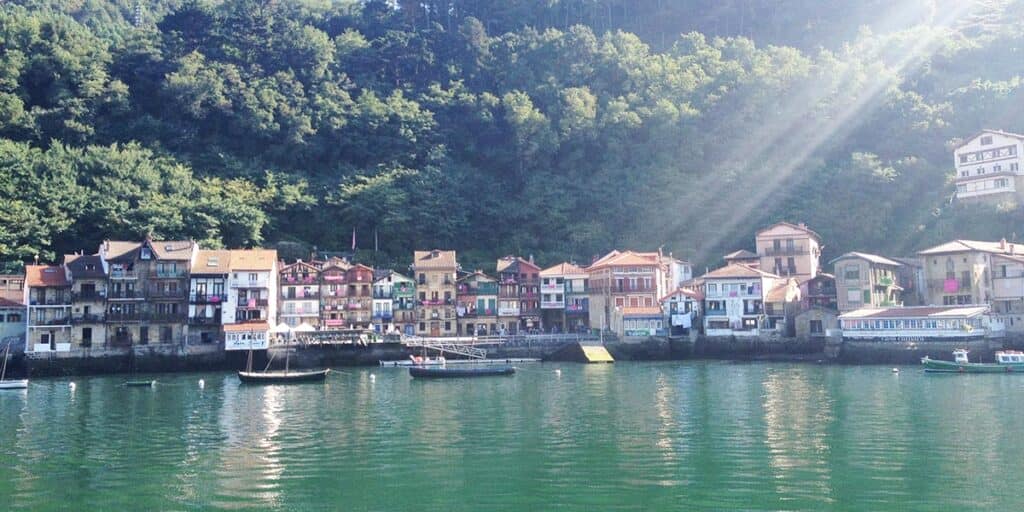
Day 5: San Sebastián to Orio
With leave San Sebastián to ascend Monte Igeldo and enjoy the views of the bay below. With the sea to our right, we make our way to the fishing port of Orio. Here we regroup and return for another evening in San Sebastián. Walking: 9 miles/15 kms.
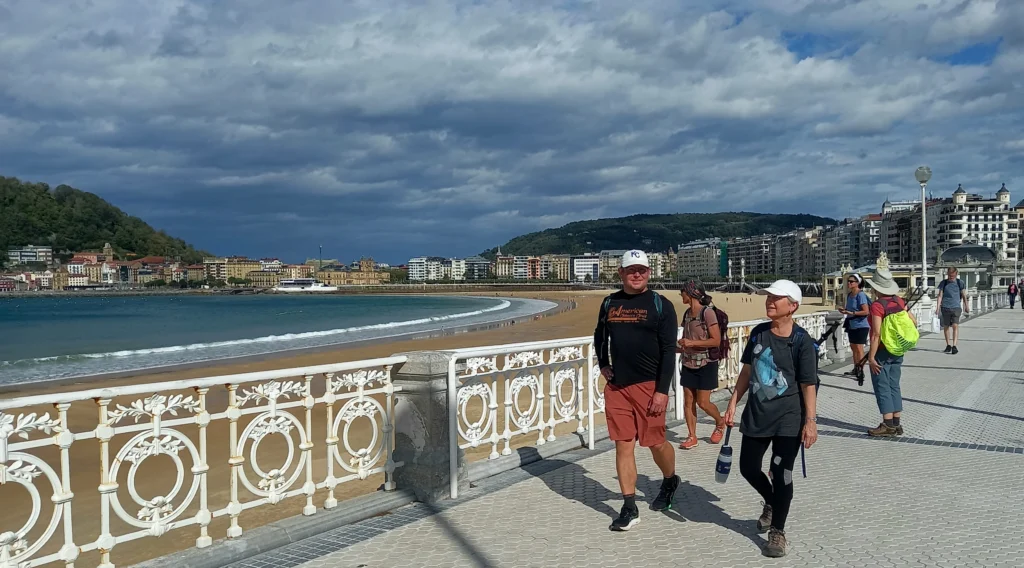
Day 6: Orio to Zumaia
From Orio we pass through Zarautz and continue along the seaside walkway to Getaria, whose famous sailing son, Juan Sebastián Elcano, was the first to sail around the world. From Getaria we continue our hike until we reach the village of Zumaia, a Basque port famous for its whaling. Walking: 10 miles/16 kms.
Day 7: Zumaia to Deba
Our day begins on the beach in the Basque Coast Geopark, where we’ll see 60 million years of history written in the layer-cake rock formations of Zumaia. From there we walk to Deba where our stage ends. Walking: 8 miles/13 kms.
Day 8: Markina to Zenarruza Monastery
We head inland to visit the Basilica of Saint Ignacio of Loyola nestled in the mountains of the Basque Country. Here, we visit the birthplace of the founder of the Society of Jesus, and learn about his life and his impact on the world! After lunch, we walk from Markina to Zenarruza Monastery. Walking: 6 miles/9 kms.
Day 9: Zenarruza Monastery to Guernica
We finish off our Camino de Santiago along the Northern Coast with a hike into Guernica, a name made famous around the world by Pablo Picasso’s dramatic anti-war painting of the bombing of the town during the Spanish Civil War. Walking: 11 miles/18 kms.
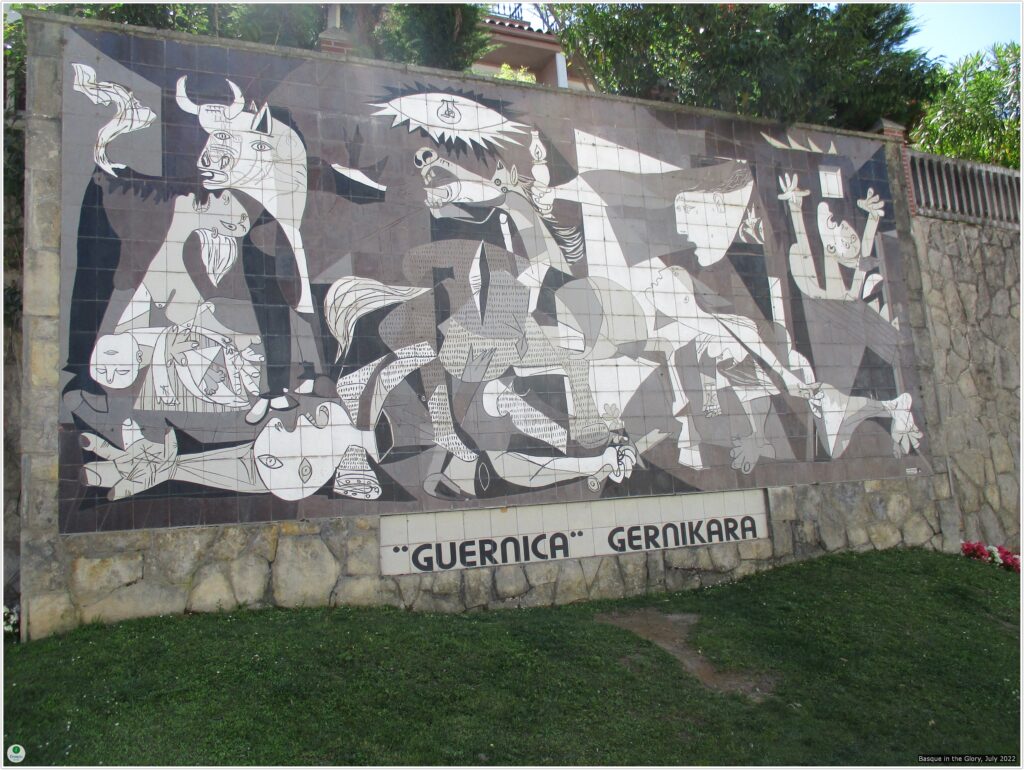
Day 10: Guernica to Sopelana Beach & Portugalete
We head to Sopelana for our last walk of the tour. The walk is along the Getxo coast, where you can enjoy the best bird’s eye view of the El Abra Port. Very similar to the famous white cliffs of Normandy in France and Dover in England. On arrival to Portugalete, we will visit the Biscay Bridge (Puente Colgante). This impressive 125-year-old structure links the neighbourhoods of Getxo and Portugalete, and was declared a heritage monument by the UNESCO World Heritage Committee. Designed by the architect Alberto Palacio, a disciple of Gustave Eiffel, it opened in 1893.
Day 11: Portugalete
It’s time to say Agur, goodbye in Basque. We hope you have enjoyed your visit of our backyard!
Camino del Norte route map
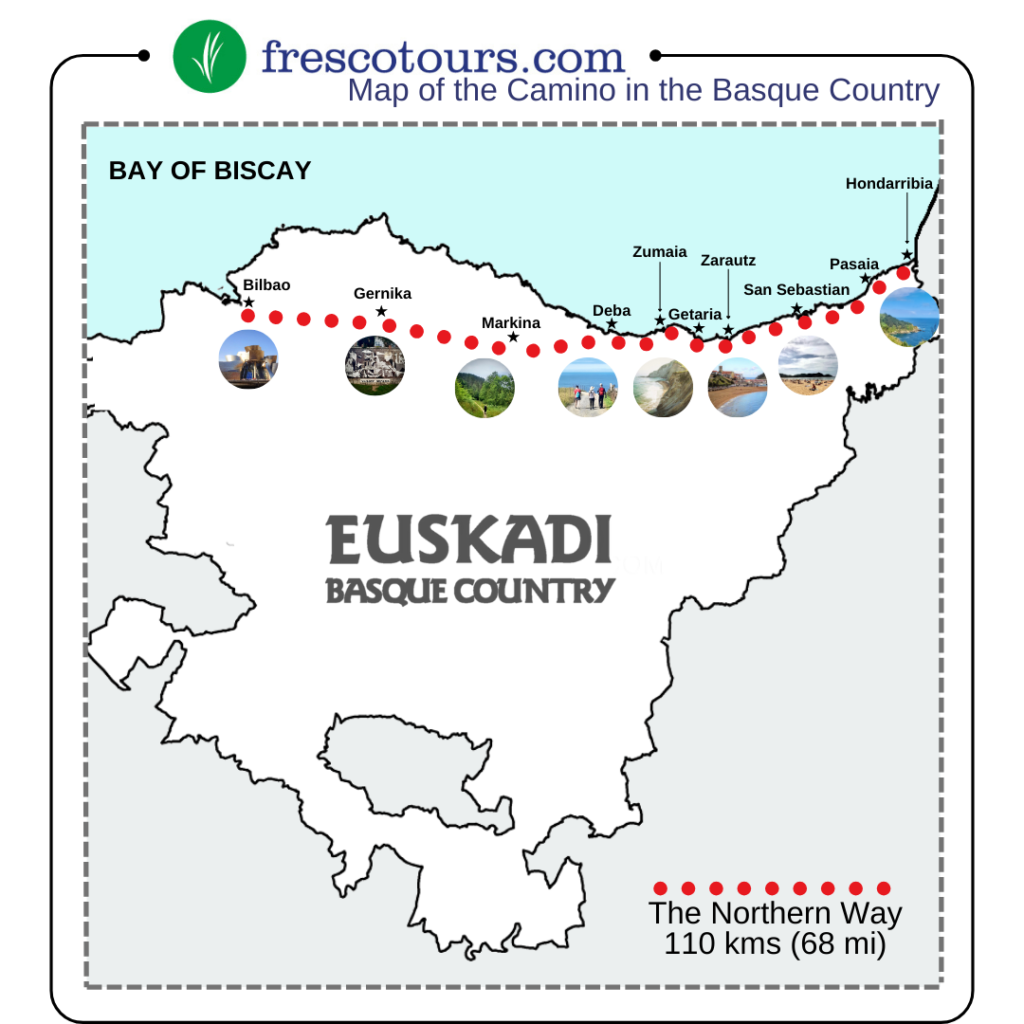
Highlights of the Camino del Norte in the Basque Country
The Camino del Norte is more than just a scenic hike; it’s a journey through one of Spain’s most unique and culturally rich regions. The Basque Country, with its distinct language, cuisine, and traditions, adds a layer of depth to the Camino de Santiago that is hard to find elsewhere. From the dramatic coastal cliffs to the vibrant local communities, the Basque stretch of the Camino invites pilgrims to slow down, savor, and reflect.
The Basque Language: Euskara
The Basque Country is unique not only for its landscapes but also for its language, Euskara. Unlike Spanish, Euskara has no known linguistic relatives, and it is considered one of Europe’s oldest languages.
Basque Cuisine: A Culinary Pilgrimage
One of the highlights of walking the Camino del Norte in the Basque Country is the opportunity to indulge in its world-renowned cuisine. The Basque Country is celebrated as a gastronomic capital, with dishes that showcase the richness of the land and sea. As you pass through fishing villages, take time to savor local delicacies, particularly seafood dishes such as bacalao a la Vizcaína (salted cod with a pepper and tomato sauce), txangurro (spider crab), and grilled sardines.
Basque Towns
The small towns of the Basque Country are the soul of this region, brimming with charm and authenticity. Each feels like a scene from a postcard, with cobbled streets, colorful facades, and flower-filled balconies. From Bilbao’s lively mix of modern art and old-world charm to San Sebastián’s coastal elegance, each town offers a unique experience. Places like Getaria and Zarautz, with their picturesque seaside views, invite you to stroll along the beach and savor fresh seafood. Inland, Gernika stands as a symbol of Basque resilience and history, with its solemn oak tree and cultural heritage. These towns invite you to slow down and soak in the traditions, from annual festivals to the irresistible aromas of pintxos wafting from cozy taverns.
Culture and Traditions: The Soul of the Basque Country
The Basque Country is known for its distinct identity, which it fiercely maintains. While part of Spain, the Basque people have a strong sense of autonomy and pride in their heritage. This is evident in local festivals, traditional sports, and art forms. One example of traditional Basque sport is pelota and its variations such as jai alai, played in frontones (courts) across the region. As you pass through Basque towns, you may see locals of all ages engaging in this beloved sport.
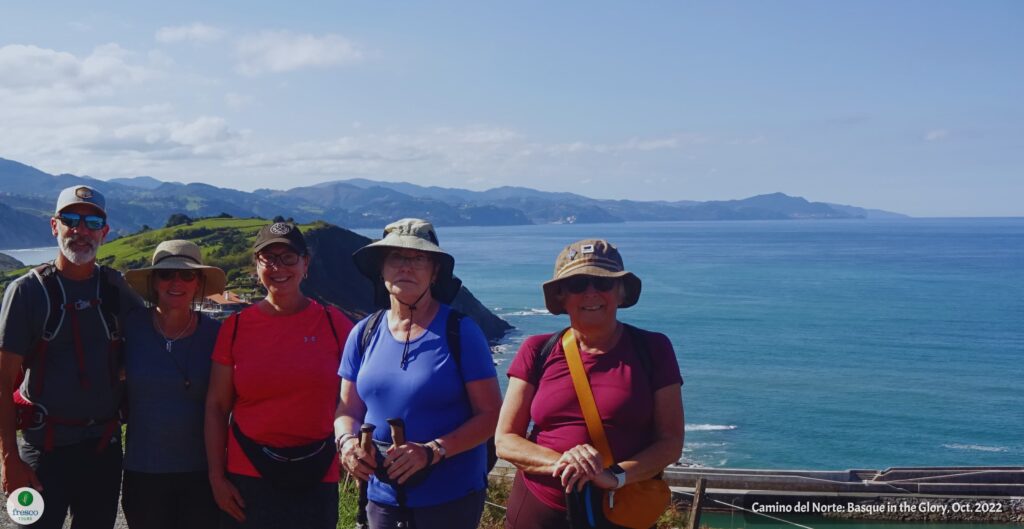
FAQs
1. How long does it take to walk the Northern Way?
The Northern Way from the border with France to Santiago de Compostela spans around 825 km (512 miles) and typically takes about 35 days to complete, depending on your pace and number of rest days. Our Basque in The Glory Tour only explores the Basque Country section of the Northern Way. This means that we walk sections from the border with France to the town of Gernika. We walk 70 miles (110 kms) on our Basque in the Glory tour.
2. Is the Camino del Norte route difficult?
The Camino del Norte route presents challenges like any other Camino route. As, for the most, we follow the coastline, there are some ascents and descents on a daily basis. However, these are doable with a little training prior to the tour and there are always options on your Fresco Tours to adapt a stage to your walking needs and possibilities. Needless to say, the stunning views make it worthwhile.
3. Do I need to know Basque or Spanish to walk the Northern Way?
No you do not. You will be accompanied by your Fresco Tours guides who speak English, Spanish and even Basque! However, we think it’s nice to learn a few words or phrases when traveling to other countries. Indeed, learning a few Basque words will most likely enhance your experience and show respect for the local culture. You are also guaranteed a smile from a local!
4. What is the best time of year to walk the Camino del Norte?
Spring, summer and fall are all ideal, as the weather is generally pleasant. Remember, the Basque Country is green year-round.
5. Can I find accommodation along the Camino in the Basque Country?
One of the major perks of booking a Fresco Tours adventure is that you do not have to worry about your accommodation. We will be staying at a combination of 3-4 star hotels and charming restored Basque farmhouses (Caserios) that offer the best in hospitality, comfort and location. And of course, all the rooms have their own bathrooms.
6. What should I pack for the Camino de Santiago in the Basque Country?
Include essentials like hiking boots, layered clothing and a good rain jacket. It rarely gets hot or freezing cold in the Basque Country. It can, however, get cold in the early mornings and evenings in spring in autumn (think 50º farenheit), so appropriate clothing is warranted. Remember, on a Fresco Tours adventure we take care of your luggage, so pack what you need, weight is not a problem.
7. Are there services like restaurants or shops along the Northern Way?
Because there are less pilgrims on the Camino del Norte compared to other Camino routes, there are also less pilgrim services. However, every day we will always pass through at least one or two towns that provide pilgrim essentials: a pharmacy, a shop, a café that serves espressos and pintxos!
Like all our tours, we will also provide daily gourmet picnic lunches on the trail and their will be a support van to provide water and assistance along the trail.
8. Is the Northern Way suitable for solo travelers?
Yes, solo travel on the Camino del Norte is common. The Camino community is supportive, and many pilgrims find a sense of companionship with fellow walkers they meet along the way. Unfortunately, Fresco Tours does not provide (yet) a solo travel option for the Camino del Norte in the Basque Country. Stay tuned, it may happen soon!

